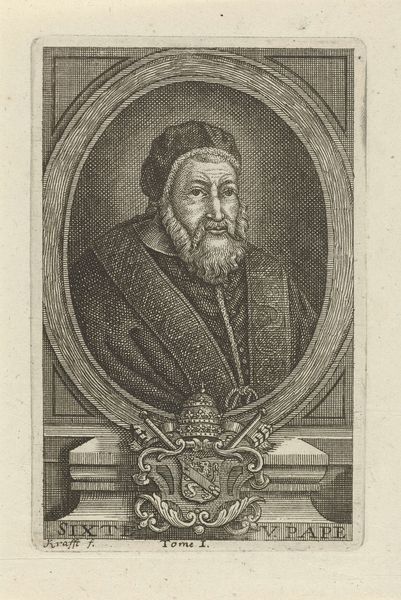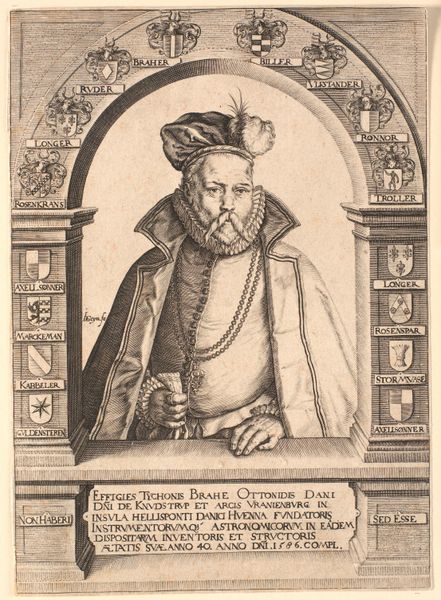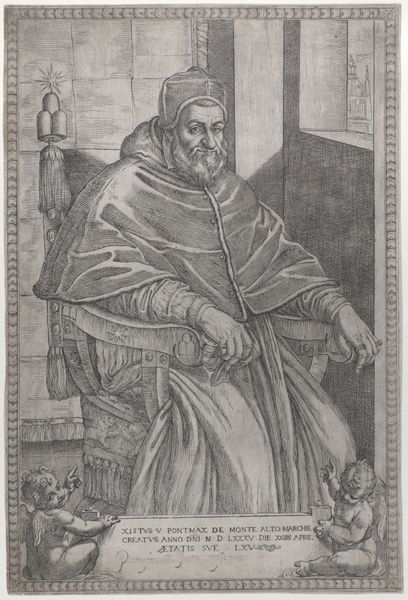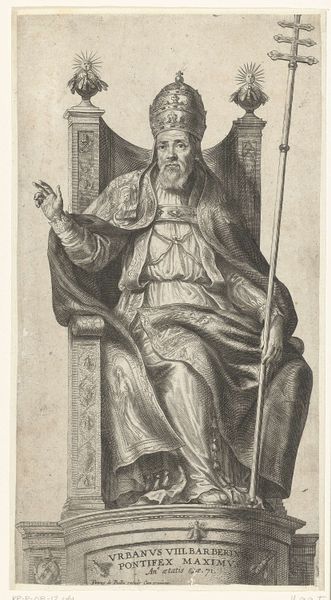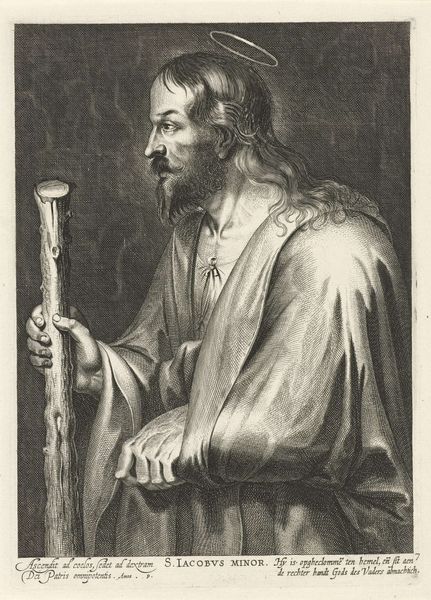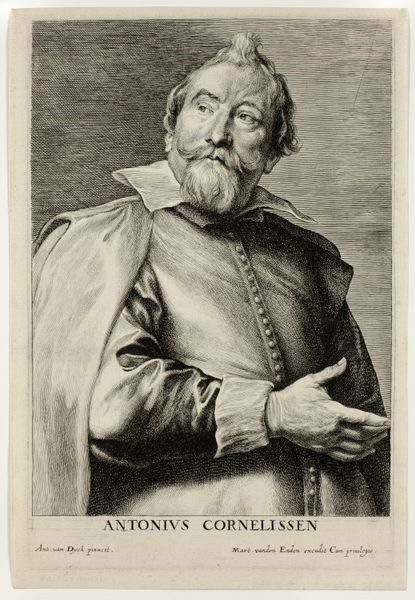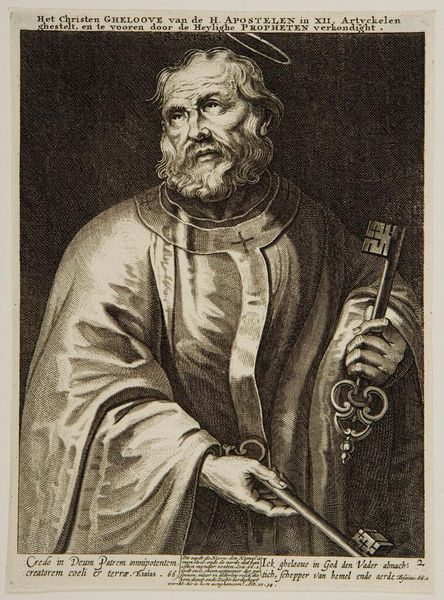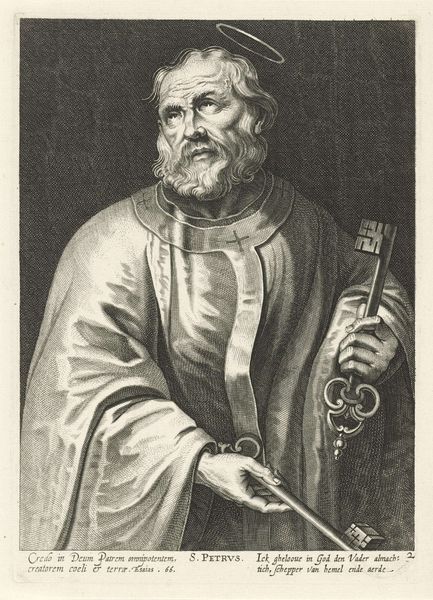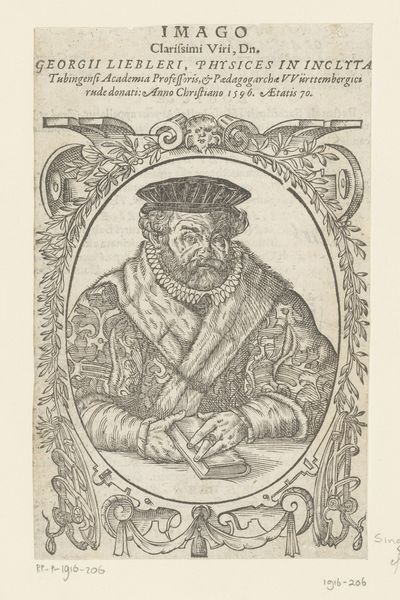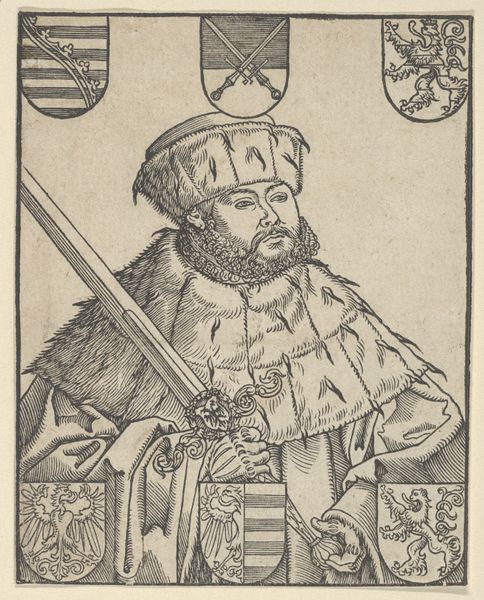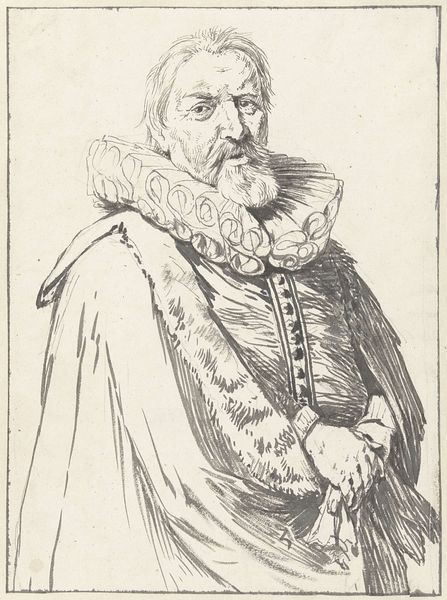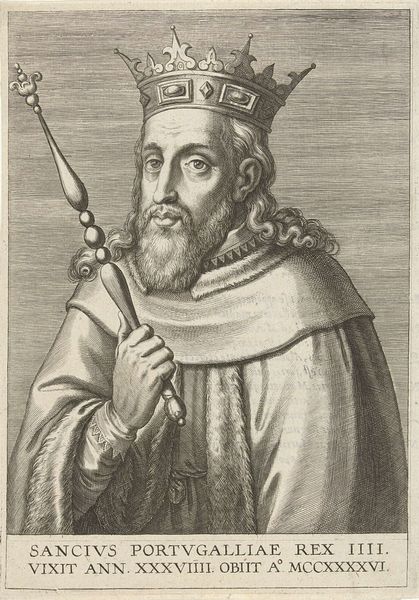
Staande mannelijke heilige, ten halven lijve (de H. Bonaventura?) 1580 - 1634
0:00
0:00
drawing, ink
#
portrait
#
drawing
#
medieval
#
charcoal drawing
#
ink
#
pencil drawing
#
portrait drawing
Dimensions: height 113 mm, width 86 mm
Copyright: Rijks Museum: Open Domain
Curator: This drawing, “Standing Male Saint, Half-Length (St. Bonaventure?),” dating from 1580 to 1634, is attributed to Pieter de Jode I. It's an ink and charcoal work currently held here at the Rijksmuseum. What is your initial impression of it? Editor: There's a subdued quality. A quiet solemnity hangs in the air, don't you think? The saint's gaze, the muted tones of the ink and charcoal; it creates a sense of introspection. Curator: Indeed. Structurally, observe the dynamic tension created by the saint's upright posture against the subtle asymmetry in the shading. The lines around the halo, for instance, possess a clarity quite distinct from the more heavily worked cloak. Editor: But, shouldn't we examine the cultural and social context? Consider the power structures within the church during that era. The detail of the cross, and its repetition throughout the image, points towards a visual language that bolsters the church’s authority, reinforcing religious ideology through art. Curator: It also creates a visual rhythm, anchoring the composition. See how the artist uses cross-hatching to create depth and volume, directing the viewer's eye from the top of the staff to the details on the saint's vestments. The play of light and shadow lends a three-dimensionality. Editor: The way the halo is rendered is particularly striking. The circle is ever-so-slightly irregular; a visual acknowledgement, perhaps, that sanctity is not easily achieved, and perhaps this connects with other political movements related to secularization? Curator: That is certainly an avenue for inquiry. However, note also the refinement of the line work around the face compared to the looser treatment of the robes. De Jode skillfully employs varied textures to differentiate the surfaces. Editor: Right, there's this beautiful, formal control juxtaposed against something much deeper: religion and politics, power and gender. It all coexists, creating an unsettling, thought-provoking atmosphere. Curator: A dichotomy reflected even within its composition, in that meeting of carefully defined structure and more spontaneous handling. Editor: Precisely. It resonates as more than just a portrait; it is a statement on faith, power and visual culture during a period of social and religious conflict. Curator: It certainly highlights how careful observation of the artwork's internal construction can yield a deep appreciation. Editor: And how social awareness can enrich our viewing experiences.
Comments
No comments
Be the first to comment and join the conversation on the ultimate creative platform.
